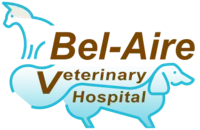
Obesity is an accumulation of excessive energy stored by adipose (fatty) tissue sufficient enough to contribute to disease. It is the most common form of malnutrition in our companion animals and it is growing in frequency due to an increasingly sedentary lifestyle coupled with highly palatable, energy-dense food sources.
Some conditions associated with obesity include:
* Orthopedic disease
* Insulin resistance
* Pancreatitis
* Heart and Lung disease
Know the Score
The most practical way to determine your pet's healthy weight is to use a visual guide known as Body Condition Score or BCS. Veterinarians use a BCS to standardize the level of a pet's weight and formulate a diet and exercise plan that best suits his/her body, activity level and lifestyle.
If your pet is overweight, it is important to calculate all the calories he/she is consuming within a 24-hour period. This should include his/her regular diet, treats, people food and supplements, such as fish oil. Most weight loss requires a 25 to 40 percent drop in daily calories.
Feeding
The foundation of weight loss in dogs is caloric restriction, however, physical activity should also be considered. Exercise will preserve muscle mass during weight loss and may even increase the pet's metabolic rate.
When you are introducing a new diet to your dog, you should allow about a week to make the transition. To minimize digestive upsets, mix the new diet in with the old diet in gradually increasing proportions. Start by feeding ¼ of the new diet mixed with ¾ of the old diet for one to two days, then increase to half-and-half for another two days, then ¾ new food and ¼ old food for a final two to three days before completely switching to the new diet.
Feed Carrots
Both cats and dogs love snacking on carrots! They are both healthy and delicious. Be sure to cook carrots before feeding them to cats or small dogs, as they could pose a choking hazard raw if the pieces are too big.
Feed Plain Green Beans,
Not only are plain (not buttered or seasoned) green beans delicious for dogs (cats don’t tend to like them), but they contain a lot of fiber and healthy vitamins that help your pooch feel full for longer. They are a perfect low-calorie snack, especially for dogs that are looking to shed a few pounds! Pop them in the fridge before feeding for a cool, refreshing summer treat.
Not Ice Cream or yogurt
Just like humans, many pets are intolerant of or sensitive to lactose in dairy products, which can cause tummy aches and digestive issues. Even if your pet isn’t, the large amounts of sugar in ice cream can contribute to obesity and should be avoided.
Exercising
One thing you can do to help your dog lose weight is to increase the intensity and length of your daily walk. Few dogs will naturally walk at a pace that generates the elevated heart rates needed for sustained aerobic activity and weight loss. Based on observations of people walking with their dogs, the average pace is 20 to 25 minutes per mile, which is actually a stroll. They make frequent pauses (on average ever one to two minutes) to allow their dog to smell an interesting object or mark territory. Walking for weight loss is very different than walking for pleasure. You should aim for a daily brisk 30-minute walk.
Keeping Track
Once a weight loss regime is started, pets should be weighed every two to four weeks and record the BCS (body condition score). In some pets it can take up to a month before weight loss even begins. Most dogs will achieve their ideal weight within six to eight months. If the process is taking longer than this, something needs to be changed. A healthy weight loss is between one to five pounds per month based on your dog's size and current condition. Some dogs may need to go slower while others may shed the pounds more quickly.
For most dogs, the secret to weight loss is a dedicated, committed, and concerned family. Dogs do not understand that their excess weight is causing them harm. It is up to us as good stewards to protect them from harm and not inadvertently contribute to their premature death or development of debilitating diseases. Together, you and your veterinary healthcare team can help your dog achieve a healthy body weight and condition safely and successfully.
